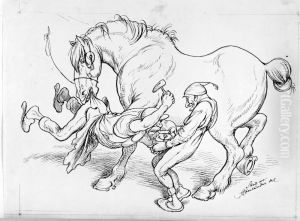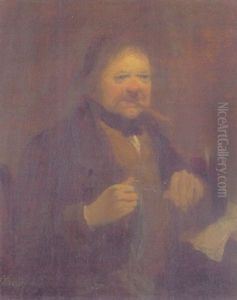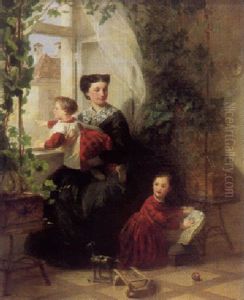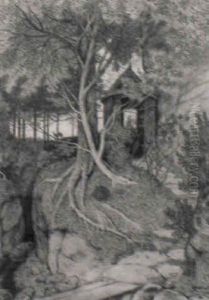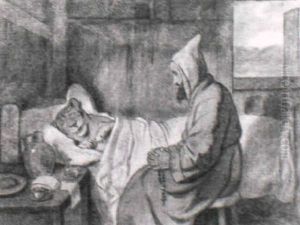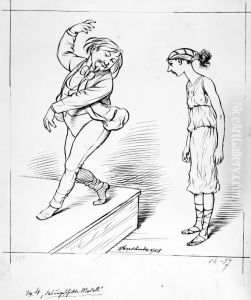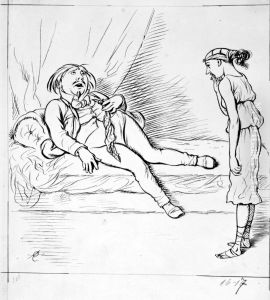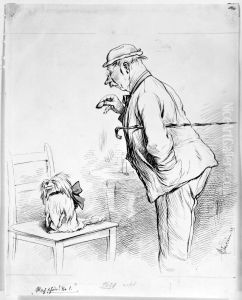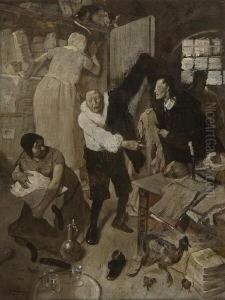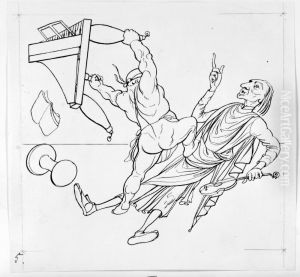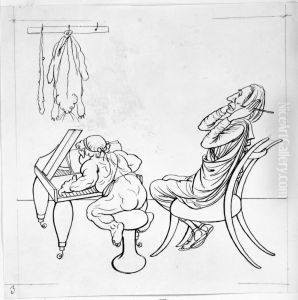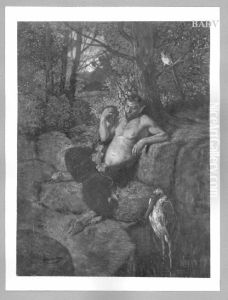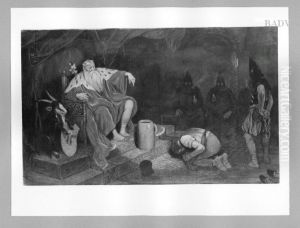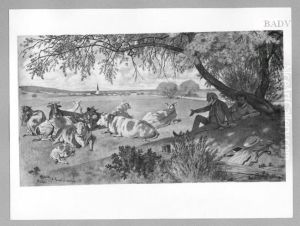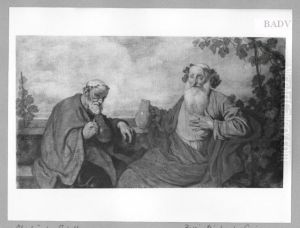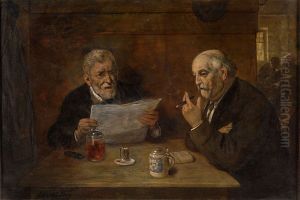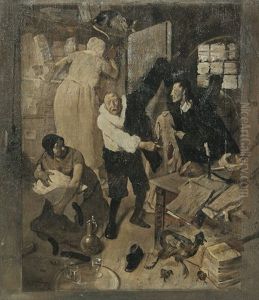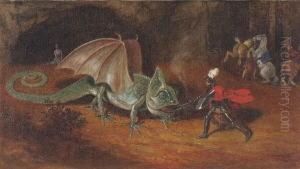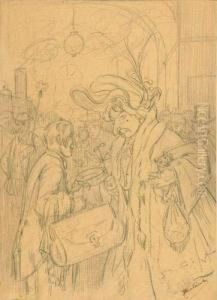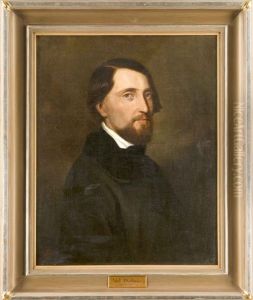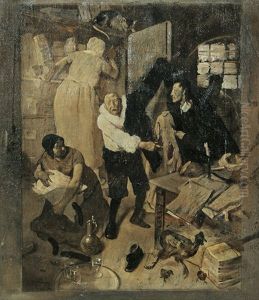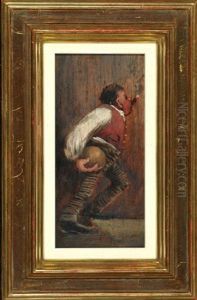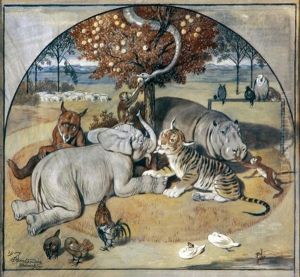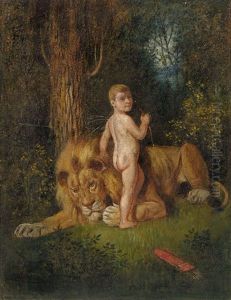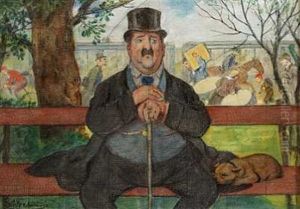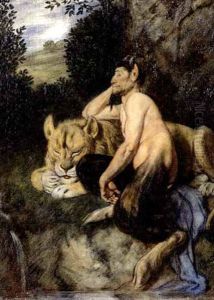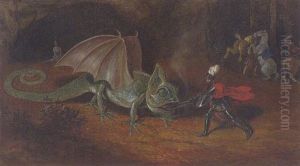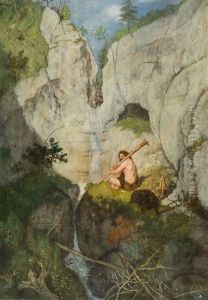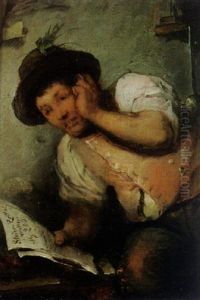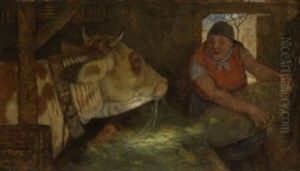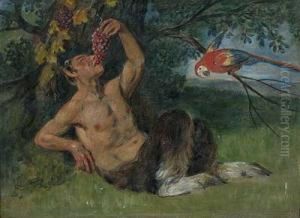Adolf Oberlander Paintings
Adolf Oberländer was a distinguished German caricaturist, born on August 23, 1845, in Regensburg, Germany. Renowned for his acute observation skills and the ability to capture human peculiarities and social satire through his art, Oberländer became one of the leading figures in German caricature during the late 19th and early 20th centuries. His upbringing in Regensburg, a city known for its rich history and cultural heritage, provided him with a vibrant environment that nurtured his artistic talents from an early age.
Oberländer's artistic journey led him to Munich, a hub for artists and intellectuals in Germany, where he further developed his skills and established his reputation. He was particularly known for his work published in 'Fliegende Blätter' and 'Meggendorfer Blätter,' two of the most popular satirical and humorous magazines in Germany at the time. These publications were instrumental in showcasing his talent to a wider audience, allowing his unique style of caricature to flourish. Oberländer's work was characterized by its detailed precision, wit, and the subtle yet pointed critique of societal norms and politics. He masterfully used both pen and ink, demonstrating remarkable versatility and creativity in his depictions of everyday life and characters.
Throughout his career, Oberländer received numerous accolades for his contributions to art, including an honorary membership in the Munich Secession, a testament to his influence and standing within the artistic community. His legacy is preserved through his extensive body of work, which continues to be studied and admired for its artistic merit and historical significance.
Adolf Oberländer passed away on December 30, 1923, in Munich. Despite the changing trends in art and caricature, his work remains a significant part of German cultural history, reflecting the social and political landscape of his time with humor and insight. Oberländer's contributions to the field of caricature have paved the way for future generations of artists, ensuring his place as a pivotal figure in the history of German art.
